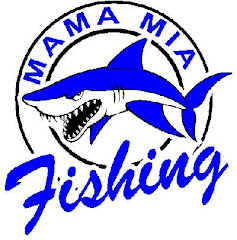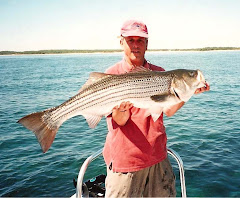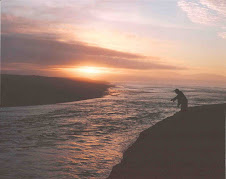Welcome to my new fly fishing blog, dedicated to fly-fishing the great waters I fish. Whether you are a novice, intermediate or advanced fly angler, this space will be devoted to topics of interest and value to all who pursue salty game fish with the long wand. Our focus will be on fly-fishing commentary, fly tying, products, timely reporting and any and all issues relevant to today’s avid saltwater fly angler. If you are inclined to toss flies into reshwater or saltwater this blog will be your weekly guide to a rewarding time on the water. We will cover the beach and boating beats as well as the increasingly popular kayak fly-fishing scene, and we will take a look west and east, north and south - wherever fly anglers roam.
Should you have any questions, areas of special interest, feedback or a report of your own fly fishing accomplishments that you’d like to share please email me at apdotcominfo@aol.com(not case sensitive). I welcome all comments and would very much like to hear what topics readers of this column would like to see covered. But as the saying goes, spring has sprung, and the fish are becoming increasingly cooperative and receptive to flies.
The table has been set for a feast of spring fishing on Long Island and early-bird fly anglers are beginning to earn their seasonal stripes. The Island’s fishing is developing steadily and consistently. At the moment, it is two thumbs up west and south with a slow build on the north shore and east ends. As is typical on the local fly fishing front, areas to the west lit up first. Jamaica Bay and Little Neck Bay have maintained their reputations as two perennial hot spots where fly anglers flock to get a first crack at spring stripers. Areas around City Island like Turtle Cove and the Orchard Beach Lagoon quickly followed suit by relinquishing schoolie-sized bass to flies. But for some J-Bay anglers the real surprise of this young season has been the size of the weakfish. While these large tiderunners – 12 to 16 pounds - were initially caught live lining bunker it wasn’t long before diligent flyrodders began hooking-up on smaller weakfish using a variety of bunker flies. It might serve the fly angler well to use patterns that incorporate hot colors such as yellow, orange, pink and chartreuse. Much like their cousins, the spotted seat trout, northern weakfish can at times be very partial to those hot hues and tones, and those colors have a solid track record of inducing weakfish to strike flies.
The eastward progression of the season has resulted in some fine striper catches in the back bays of the south shore and the sheltered harbors of the north shore. The majority of fly activity has been in and around the shallows of Fire Island, Jones Beach and Great South Bay. Bass also have been caught on flies in Riverhead area, Peconic Bay, Moriches Bay, and the western end of Shinnecock Bay. On the north side of the Island, Manhasset Bay, Cold Spring Harbor, Huntington Harbor, portions of Smithtown Bay and Mt Sinai Harbor have seen the first of the year’s bass succumb to flies. While most of the fish have been school-sized bass there are some nice keepers in the mix. The early arrival of hungry and aggressive bluefish has also kept a steady bend in the rods of many conscientious flyrodders, especially along the entire south shore. With blues already entrenched in the “hood” it might be worthwhile getting that bite tippet on the end of your leader soon rather than later. With the invisibility factor of fluorocarbon don’t fret too much about going too heavy – it won’t spook the bass. Depending on the size of the blues, 30 or 40-pound shock tippets should do. Just remember to use a loop-type knot so the fly swings freely when retrieved. Very often when using heavy leaders, standard attachment knots like the clinch or improved clinch knots tend to bind up the fly and cause it to track awkwardly while lessening its effectiveness - loop knots tend to be much more effective. Also change frayed tippets regularly. An assortment of bunker flies, slim Deceivers, Clouser Deep Minnow and Half and Half patterns have been some of the early season favorites.
A weekly blog dedicated to fly-fishing the waters of Long Island and other world-class destinations.
About Me
- AP
- Following a long and fulfilling corporate career I moved on to pursue other interests as a full time outdoor journalist, book author, photographer and lecturer. I am also a strategic managment consultant involved in the outdoors, recreation and lesiure time industries. Fly fishing is my favorite pastime but I enjoy all forms of fishing and traditional outdoor activities. When I am not writing you will most often find me exploring my home waters of the Long Island Sound. I am equally as comfortable on a tidal creek in the wilderness of the Alaska Peninsula, or on a Gulf Coast flat or in the waters of a free flowing river. I love to wade, fish from a boat and kayak. If I couldn't fish, my life would not be complete. And should the day ever come when I no longer enjoy catching diminutive bluegill, I will part with all my gear and take up a new sport. Professional Affiliations: Outdoor Writers Association of America; New York State Outdoor Writers Association; Professional Outdoor Media Association; Association of Great Lakes Outdoor Writers. For further information please refer to my website at www.angelopeluso.com
Welcome and Enjoy
Welcome to AP's Fly Fishing Journal, a weekly blog dedicated to the pursuit of fly-fishing. Our focus will be the waters of Long Island and other world-class destinations. Whether you are a novice, intermediate or advanced fly angler, this space will be devoted to topics of interest and value to all who pursue game fish with the long wand. Topics covered will include fly-fishing commentary, fly tying, products and any and all issues relevant to today’s avid fly angler. If you are inclined to cast flies to fish , let this "journal" be your weekly guide to a rewarding time on the water. I will cover saltwater and freshwater, the beach and boating beats as well as the increasingly popular kayak fly-fishing scene. And we will look east and west, north and south - wherever fly anglers roam. I hope you enjoy my offerings. Thank you for stopping by.










